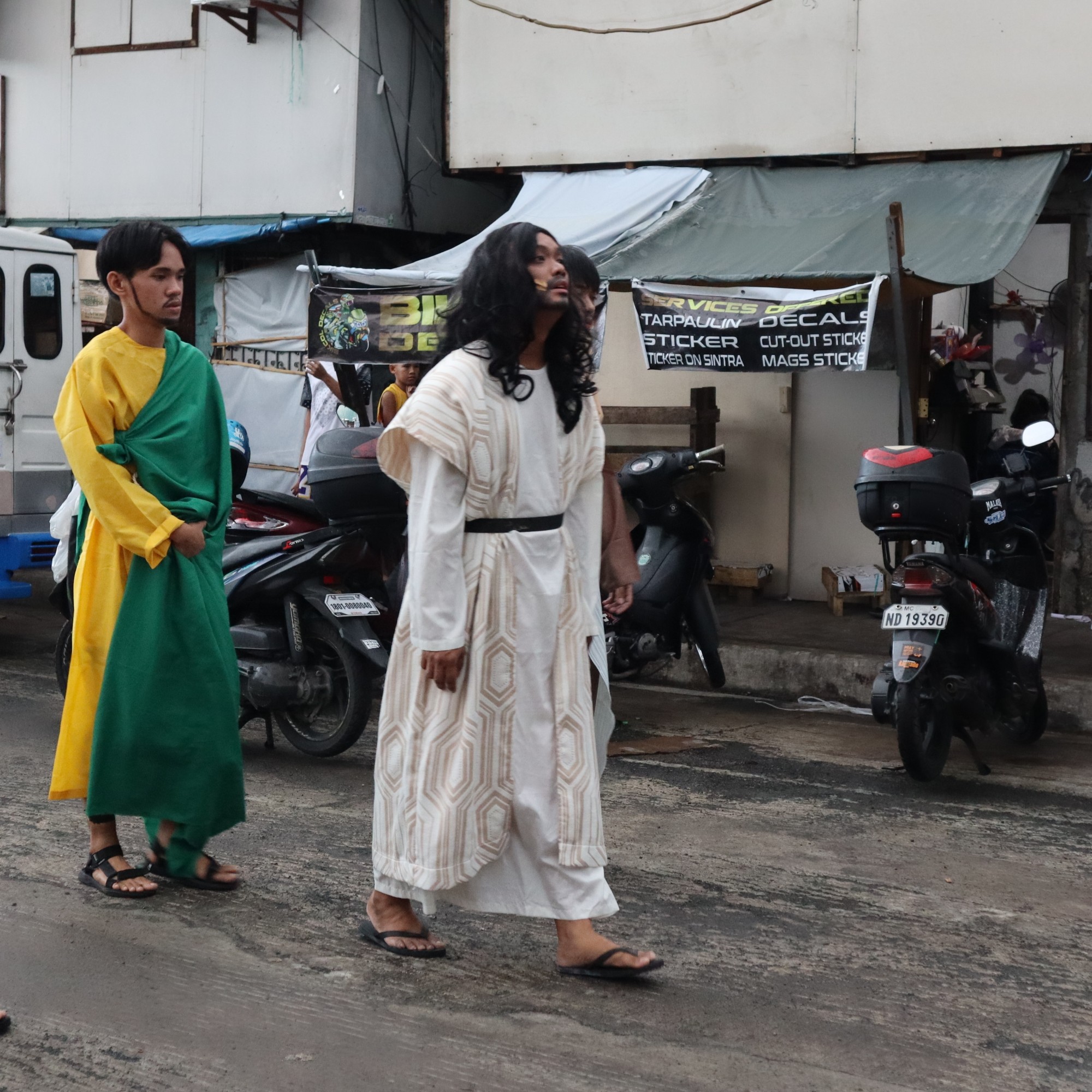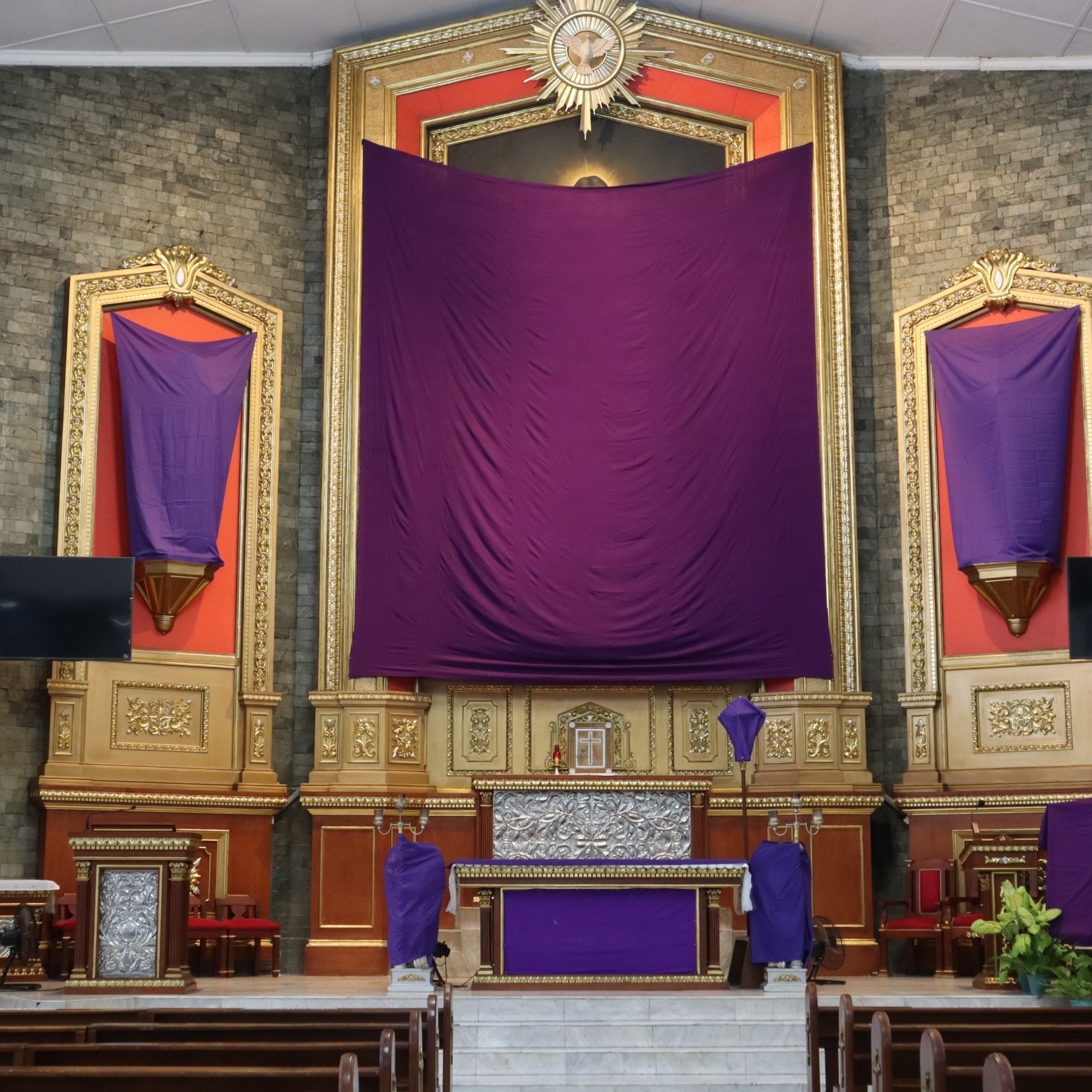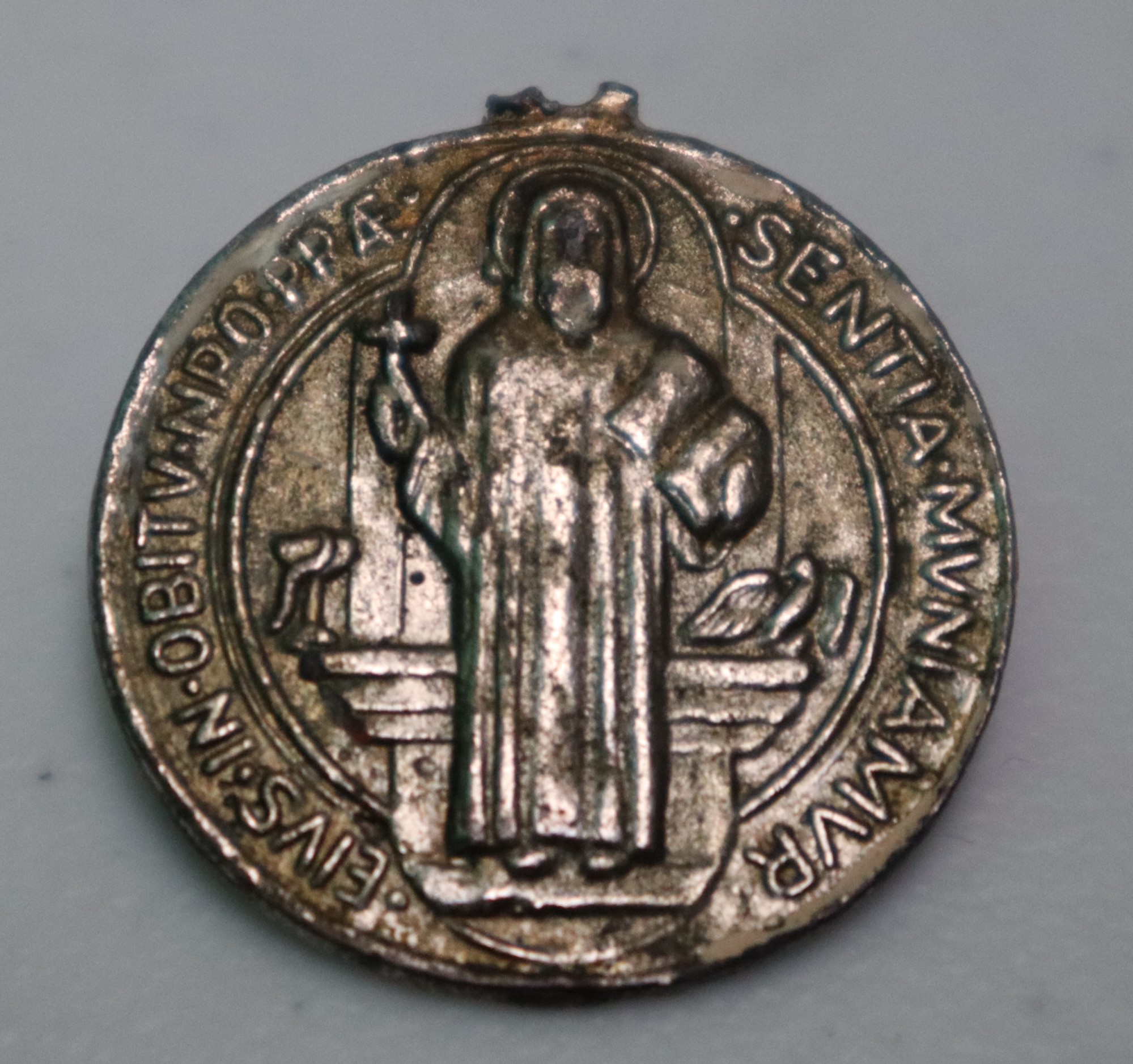Holy Week expresses the Catholic faith’s core belief in “the inevitability of death [being] accompanied by the promise of resurrection, which is eternal life”, according to Randolf David, professor emeritus of sociology at the University of the Philippines.
Despite rapid urbanisation, the Senakulo – which starts with Christ’s last supper and ends with his crucifixion – continues in the streets of cities, towns and villages where there are churches. It is usually performed by church youth members on Holy Wednesday, also called Spy Wednesday, a reference to Judas, who had agreed to spy on Christ for a fee.

Like the Senakulo held four centuries ago, the actors whom Fedy watched performed in stylised Roman costumes. But the Christ she witnessed that day wore beach slippers and performed in front of a blue Ford pickup carrying floodlights to illuminate each scene, as well as a portable generator and sound system that could project every groan and cry uttered by Christ and Judas through their wireless microphones.
The actor who played Christ, Joseph Jambalos, embodied the role of the anguished saviour well, while Mitee John Sexciona played the part of Judas to the hilt.
Michael George Pineda, a 19-year-old college student, explained why he took on the role of Pontius Pilate in the street passion play instead of going on holiday. “Christ is my guidance throughout my life,” he told This Week in Asia.
“Our faith and service as Catholics are very important to us,” said Mherilyn Andaya, 18, who represented “the people” in the play.

‘Split-level Christianity’
Unlike Europe and other modern states, “religion continues to occupy a place in our society and in the lives of our people”, professor David noted.
The Philippines has the third-largest Catholic population in the world, after Brazil and Mexico. The 2020 Philippine national census found that nearly four out of every five (or 85.6 million Filipinos) said they were Catholics among the country’s 108.6 million residents.
However, Filipinos practise a form of “split-level Christianity”, a term used to describe the mixing of Catholicism with ancient folk beliefs.
One embodiment of this intermingling is the “Poong Nazareno”, or Black Nazarene – a life-size statue of Christ that arrived in Manila from Mexico over eight centuries ago and continues to be venerated every January with a mammoth procession during which pious believers attempt to touch the statue, believing it can cure diseases and grant miracles.

Aside from the Nazareno, the Santo Niño continues to have special devotees. It was a gift from the explorer Ferdinand Magellan to Hara Amihan, the queen of Cebu, after Magellan and her husband Rajah (king) Humabon made a blood compact in 1521. When the Spanish conquistador Miguel López de Legazpi returned to Cebu in 1565 and burned down the whole settlement, his soldiers found the statue intact.
Spain then sent Spanish friars who “superimposed [Christianity] upon an animistic indigenous culture”, according to David, who added: “In the sense the friars were very clever, they substituted Western icons for the indigenous ones.”
David said the kind of modernity that had taken root in Europe had not yet gained traction in the Philippines. “That is why the Nazareno, the Santo Niño, the adoration of the Virgin Mary in different places of the country, all these religious practices have persisted over time. I don’t see them declining in the next decade or so.”
Those statues are shrouded in purple silk cloth during Holy Week as a sign of mourning.

The overlay of Christianity atop animism is particularly apparent during Holy Week, when Filipinos who possess anting-anting – a term for talismans or amulets – “recharge” them in the period between Christ’s death at 3pm on Friday and Easter Sunday.
“There is a limbo between the Lord’s death on Good Friday and Resurrection at Easter,” historian Ambeth Ocampo, former chair of the National Historical Commission, told This Week in Asia. “Churches are bare, tabernacles are empty. It is a time people sometimes describe as patay ang Dios, God is dead.”
During this period, there is a belief that “elementals or other spirits, not necessarily bad or evil but outside the shade of the Christian God” can be tapped as they roam about, according to Ocampo.
The amulets are armed with different powers. Some supposedly deflect bullets or knives, while others protect homes, heal the sick, or prevent misfortune.

Ocampo noted the same time frame could also be observed as a period of deep mourning. “When I was a boy, we were told not to take a bath, not to make noise, not to laugh. It is a period of mourning and waiting, a lull that builds expectation for the joy of Easter. At the Easter Vigil, people enter a dark church, light candles, repeat the baptismal promises to reject evil to prefer light to darkness.”
Still, quite a number of Catholics prefer to go to beaches rather than churches during the Holy Week.
Ocampo recalled doing that with his family as a boy, “so I never really understood and appreciated all these rituals until I lived as a Benedictine monk in a monastery for five years”.
This week, Metropolitan Manila will be emptied of people. The Manila International Airport Authority said it expected some 1 million passengers to pass in and out of the four airport terminals.
For Alan James Montenegro, country manager of Chroma Hospitality and president of the Tourism Congress of the Philippines, Manila is the best place to be during Holy Week.
“I’m staying in Metro Manila because it’s nice and quiet,” he said.

